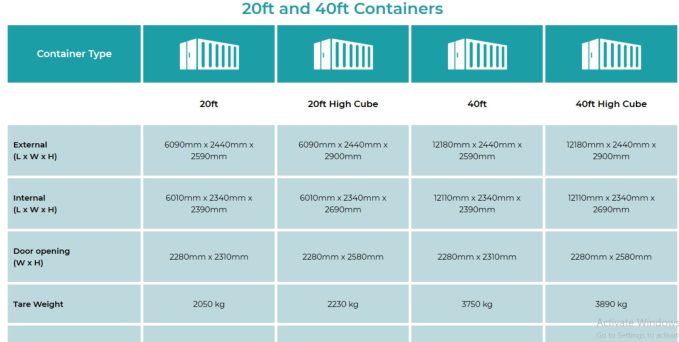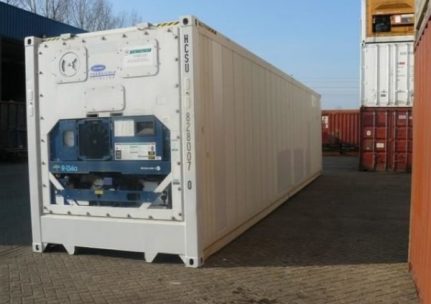Container Info

The sides of a container in nearly all cases, is corrugated. The depth of the corrugation is usually 1 inch (25mm),which means that 2 inches (SOmm) is lost from the external width dimension (1 inch each side). The back (blank end) is also corrugated and the doors are around 2 inches (SOmm) thick meaning that approximately 3 inches (75mm) is lost from the length.
The main reduction from external to interna ldimensions is with height. The floor of a standard container has an underside clearance of approximately 6 inches (1SOmm) and the floor has a thickness of 27mm (1.1 inches). As the roof is corrugated another 1 inch (25mm) is lost resulting in an internal dimension of around 8 inches less than external- 7ft 10 inches (2.39m), though this can vary slightly either way depending on the floor thickness and construct ion method used.
Though the door height is additionally reduced because of the steel top rail above the door, this is a part of the structural integrity of the container, typically irs 4 inches (1OOmm) thus reducing the entrance height to 7ft 6ins (2.28m),though this can vary slightly either way.
There are three relevant weights.the Tare weight, the Gross weight. and the Payload. These are painted onto the outside of the container doors when it is in service or before it has been repainted for another application.
The container Tare weight is the weight of the container without cargo or contents.
The container Gross weight is the weight of the container plus the maximum Payload it can hold i.e. the maximum totalweight of the container.The Payload (or Net weight) is the weight of the cargo or contents that a container can hold.




